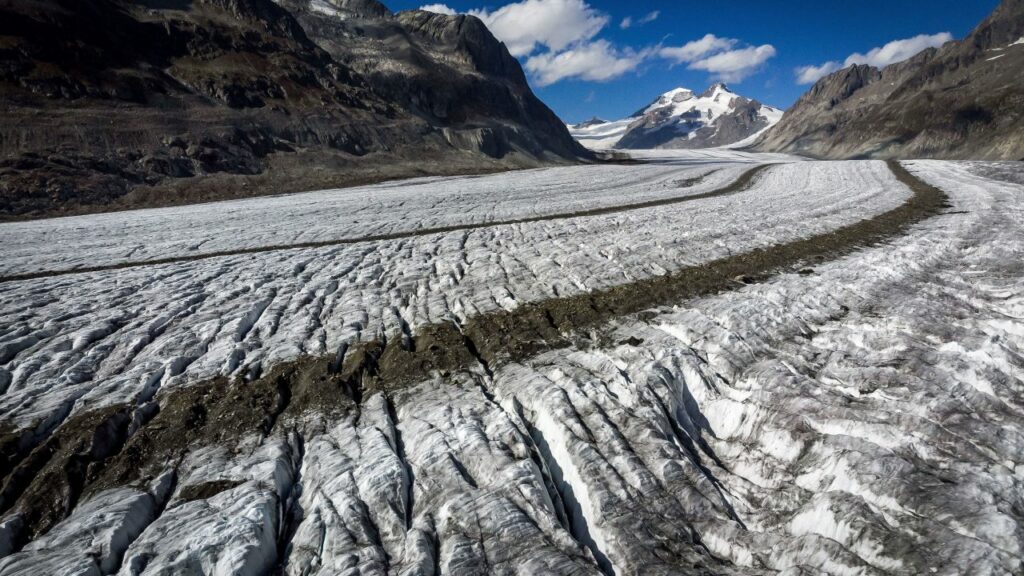A new study by Swiss Re Institute, an arm of the world’s largest reinsurance firm, says global warming sure is bad. Why, if we don’t mend our carbon-sinful ways, world GDP is “set to lose up to 18%” by 2050. By which they don’t mean it will end up 18% smaller than it is now. They mean it is set to be 18% smaller than a hypothetical “no-climate change world”. A loss they computed by running a model powered by… you guessed it, RCP8.5. Such jiggery-pokery is common because it sounds scarier to imply that we’d actually be poorer, although the idea is nuts. As is the claim that without mitigating action the temperature would rise by 3.2%. or that we know what would happen in a world where climate did not change. Or that any such thing ever existed or ever could. Still, better pay higher premiums, right?
It would be difficult to overestimate the progressiveness of Swiss Re, whose web page even includes an “Art at Swiss Re“ section on how “Art and architecture significantly contribute to Swiss Re’s brand and identity. They express the core values of the company, underpin Swiss Re’s commitment to offering a stimulating working environment and bringing cultural responsibility to life.” And of course there’s an Inclusion and Diversity section with blog entries by four white men although awkwardly, their Board has only 3 women and one PoC, also female so they doubled up there. And their Group Executive Committee has just one of each, and so on. But never mind because climate.
Also never mind making sense. For instance when you read “no mitigating actions” you suspect right away that what’s lurking is the exploded RCP8.5 scenario. And it is. Moreover on p. 4 the actual publication (available here if you fill out their form), after asserting that RCP8.5 “assumes no action is taken to reduce GHG emissions” rather than, as it really does, assuming a ludicrous increase in coal use, says “In this scenario, according to the IPCC, global temperatures will rise by between 3.2–5.4°C between the years 2081–2100 from pre-industrial times. For mid-century, the likely range is 2.0–3.2°C warming. Our severe scenario assumes the higher end of 3.2°C warming by mid-century.” So it does. But why?
Well, to be scary. What else is RCP8.5 for? Thus the report subtitle is “no action not an option”. But of course it is an option and the question is, how does it compare with the alternatives? Including, according to their model, that the scenario where temperature rises by “Well-below 2°C increase” due to something called “Paris target”, world GDP still “falls” (meaning rises but very slightly less) by 4.2%. So everything they’re asking us to do to avoid “Severe case” must cost less than the difference between these two options, namely 13.9% of global GDP. Seen that way, asking developing nations to forego cheap affordable energy might be a very bad bargain.
Notice also that both of these scenarios are by comparison with a “no-climate change world”. But what can this phrase mean? That temperature will stabilize exactly where it is forever? That it will go back to 1979 and stay there? That it will go back to fluctuating the way it used to before bad people messed it up? That it will go back to 1979 then trend down? Back to the Little Ice Age? Back to the Minoan Warm Period? Back to the research department.
There are aspects of the climate change debate where one worries about trying the patience of the audience. Including that nobody “denies” climate change because it’s obvious that climate changes; the key questions are what causes it and what impacts it might have. But when someone as superficially sober and reputable as Swiss Re talks in this manner it is necessary to revisit this point. And dwell on it.
In noting and critiquing this study, Paul Homewood points out a number of relevant flaws including that one about 3°C of warming by 2050 and the failure to note that there are good reasons to think at least some warming would be beneficial on balance. Then he lets loose with this blast: “The costings are inevitably derived from computer modelling (!), which attempts to quantify what the world’s economy would have looked like in a world without climate change. This is frankly silly, as a world without fossil fuels and economic growth generated by them would have been infinitely poorer than now. In any event, these sort of studies that try to guess what the world would be like without warming are worthless, and just a game for fools and charlatans.”
If true, this criticism is far more devastating than even Homewood seems to understand, because it does not merely demolish this study. It demolishes the whole world of climate modeling, all of which attempts to say what the world will be like if something happens by comparison with what it would be like if that thing did not happen. And if we cannot know what the world would be like without “climate change”, it’s because we can’t model climate. In which case modeling what it will be like with “climate change” is also impossible, and modeling involves comparing one thing you have not seen with another thing you have not seen. Which is a colossal waste of time and money… unless of course it lets you raise premiums, pose as virtuous before customers, get government subsidies or all of the above.
To be sure, the slogan of Swiss Re Institute is “Superior research driving better decisions.” But in the world of marketing, not all is what it seems.


